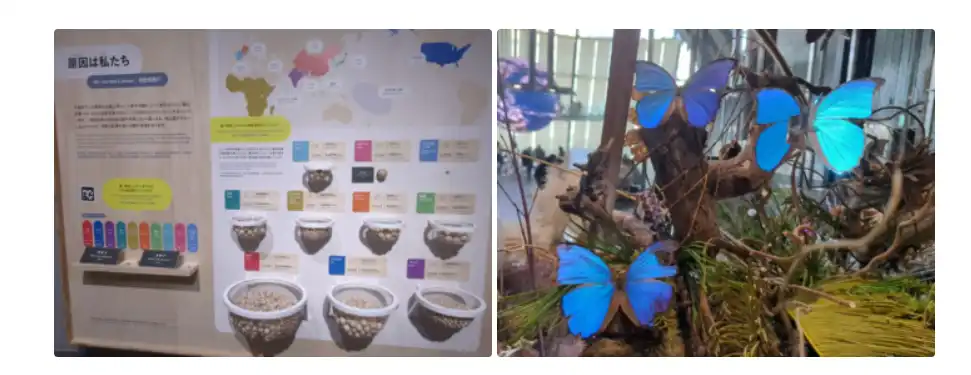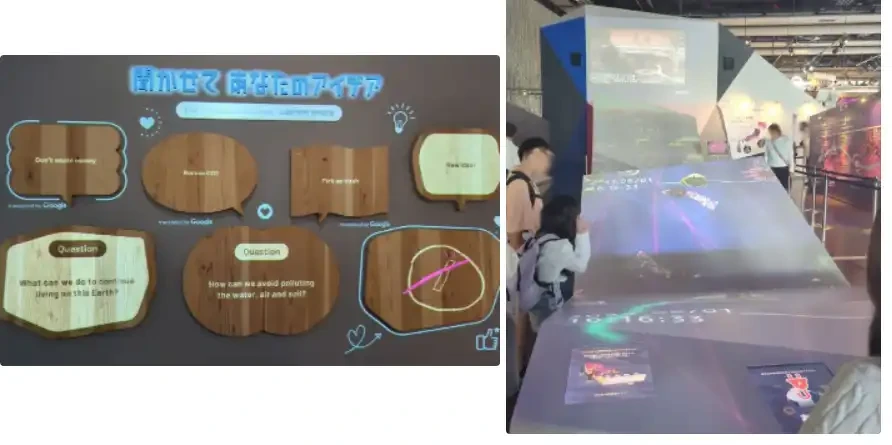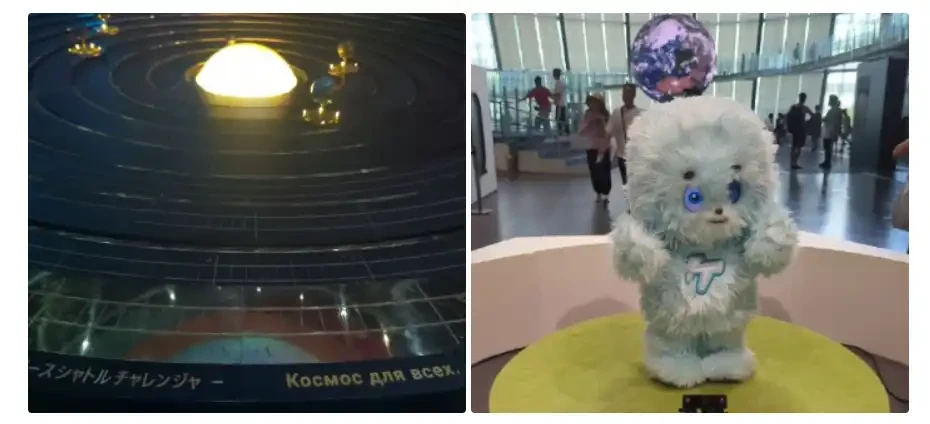Original title: Review: museums of the future, Dubai and Tokyo
原文文章,作者:Vitalik Buterin
原文翻譯:Eason、MarsBit
Over the past year, I’ve had the pleasure of visiting the Museum of the Future in Dubai and, more recently, the National Museum of Emerging Science and Innovation in Tokyo. Both museums came highly recommended by close friends and collaborators of mine, and I think they’re both trying to address a crucial issue: having a concrete, positive vision of a technologically advanced future that isn’t just the 3478th Black Mirror-style Hollywood dystopia.
What struck me most about visiting both museums was how different the two visions were. They are by no means contradictory: there is no logical impossibility, or even all that strong, between the specific technologies and structures envisioned by the Dubai futurists and the Tokyo futurists. But at the same time, they feel very different and prioritize very different directions. This leads to a natural question: what can we learn and appreciate from each, and is there a synthesis between the two?
Left: The exterior of the Dubai Museum of the Future. Right: The giant sphere inside the Tokyo Museum of the Future, showing the worlds major languages. What I like about the Dubai Museum of the Future
When you start your visit to the Museum of the Future, you first enter a simulated space elevator that will take you from the surface of the Earth in the year 2064 to a space station in geostationary orbit. You can see information screens and panels that let you see all of humanitys space stations around the solar system, on and around planets, and at Lagrange points.
After that, youll see exhibits in various other areas of science and technology. One of the main themes is meditation and health and wellness, showing the infrastructure that makes it easier for people to access alternative mental states. The section on biotechnology that impressed me the most was the vision of using genetic engineering to increase the resilience of the biosphere, allowing plants and animals to survive in more diverse environments.
It’s worth, uh… thinking about this scenario for a moment. It’s a far cry from the traditional Western way of thinking about environmental issues. In the West, nature is the Garden of Eden, originally beautiful and pristine, now corrupted by industrial technology. The main moral imperative is to protect, to reduce the harm we would otherwise cause. In Dubai, the opposite is true. Nature’s default state, at least their customary state, is a desolate wasteland. Human ingenuity and artifice with nature can not only mitigate the harm caused by other human ingenuity and artifice, it can actually go further and improve the environment, leaving it better than when we started.
Miraikan doesn’t have anything like that. There is an exhibit that touches on important environmental issues facing the planet, but its tone about the problems is much more traditional: these problems are humanity’s fault, and we need to be mindful and find ways to reduce our footprint. There are multiple exhibits that deal with improving the lives of people with poor vision or hearing (or complete loss of hearing). But the solutions they propose are mostly tweaks that try to make the world a little gentler and friendlier to people with these conditions: robots that can help guide people, writing on business cards in Braille, and so on. These are genuinely valuable things that could improve the lives of many people. But they’re not what I expect to see in the Museum of the Future in 2024: a solution that lets people actually see and hear again, like optic nerve regeneration and brain-computer interfaces.
Dubai’s approach to these issues strikes a chord with me in a way that Tokyo’s approach does not. I don’t want the future to be 1.2 times better than it is now, where I enjoy a comfortable life not for 70 years but for 84. I want the future to be 10,000 times better than it is now. I believe in the Nietzscheanism that Scott Alexander describes in his recent blog post, where he cautions against setting the main goals in life as goals like “I don’t want to piss anyone off” and “I want to take up less space” that are better left dead than alive. If I become infirm for medical reasons, then living in an environment that allows me to be comfortable despite these disadvantages will certainly be an improvement. But what I really want is technology to fix me and make me strong again.
That said, there are things about the Dubai Museum of the Future that feel missing and limited, and the Museum of the Future does make up for those shortcomings very well. So now it’s time to shift the focus and talk about the strengths that I think make the Museum of the Future great.
What I liked about Tokyo Miraikan
When you first enter Miraikan, the first exhibit is about Earth’s crisis: global warming, and various environmental issues related to either too high a number of pollutants or too low a number of basic resources. Immediately after that, you’ll see exhibits of various art forms, with a lot of use of artificial intelligence, mimicking various patterns we see in nature. After that, a giant sphere repeatedly plays a short information film called “Into the Multiverse,” showing various statistics about different parts of the world and how people live in different regions. After that, there’s a hands-on exhibit showing the inner workings of basic low-level internet protocols.
Left: A graph showing different countries contribution to the worlds carbon dioxide emissions. Right: A natural butterfly replica and a robotic butterfly replica.
What particularly struck me about these exhibits was the way they invited people to actively learn and participate. All of the informative exhibits sought to present information in a tangible way, making it easy for people to understand the important details and consequences of each issue. The section on overfishing offered complaints like, “I love sushi… but we probably won’t be able to eat sushi as often as we want in the future, right?” At least two exhibits ended with interactive sections that asked questions related to the content and invited people to provide their own answers. The exhibit on solving the earth’s resource problems took the form of games.
Left: A billboard inviting museum visitors to submit answers to the questions “How can we avoid pollution?” and “What can we do to continue living on this planet?” and showing answers from recent visitors. Right: A game about avoiding the minefield of ecological challenges and moving towards a better future in 2100.
In this respect, the two museums strike very different tones. The Dubai museum feels consumerist: This is the wonderful future we’re going to have, you just have to sit back and enjoy the future we’re building for you. The Tokyo museum feels like an invitation to participate: We won’t tell you too much about the future, but we want you to think about these issues, understand what’s going on behind the scenes, and be part of building a shared future.
The main type of technology I found missing from Dubai’s Museum of the Future was social technology, especially governance. The only explicit description of a governance structure I found in Dubai’s imaginary world of 2064 was a throwaway line in the description of the main space station on Mars: “Operator: Global Space Authority, SpaceX.” At Miraikan, on the other hand, the structure of the museum itself emphasizes collaborative discussion, and you’ll see frequent references to language, culture, government, and press freedom.
Are these two visions compatible?
At first, these two visions seem diametrically opposed, and perhaps even thematically going in opposite directions. But the more I think about it, the more I feel that the two are actually very synergistic: one fills in the gaps in the other. I don’t expect the world in 2100 to be the same as it is today, or at most 20% better. And those civilizations that do have an overwhelming mindset of trying to get by with less resources are going to find themselves under constant pressure from external forces and from within their own societies to push our boundaries more strongly. But at the same time, the more radically our societies evolve far beyond historical norms, the more we need to make sure that everyone is involved, both in terms of understanding what’s going on and in the process of discussing and making that happen.
My own posts trying to make advanced topics in cryptography more accessible are written in this spirit: we do need advanced tools, but we also need them to be understandable and usable, to ensure more people can work together, and to ensure the future empowers people, rather than becoming a series of iPhone interfaces built by a few people that the rest of us can only access in a standardized way.
Perhaps the ideal future museum I would like to see is one that combines the bold imagination of Dubais Future Museum with the warm and welcoming spirit that only Japans Future Museum can bring.
Left: The universe belongs to everyone, Dubai Museum of the Future. Right: Future robots, deliberately designed to be cute and friendly, not threatening.
This article is sourced from the internet: Vitaliks new work: Technology and Humanities – Dual perspectives of Dubai and Tokyos Future Museum
作者:Mia、ChainCatcher 原編輯:Marco、ChainCatcher 散戶將虧損的原因歸咎於FDV(未來折現值)高、流通量低的代幣發行策略,認為VC和項目方合謀解鎖大量代幣,這影響了加密貨幣市場。創投呼籲不公正,將這個週期的初級市場定義為地獄般的困難。樂得資本合夥人李曦表示,今年帳面是獲利的,但都是紙面價值,因為屬於VC的股份仍是0解鎖。 。 ChainCatcher訪問了多位VC產業代表,試圖了解VC目前的生存現狀。許多VC表示,有…












